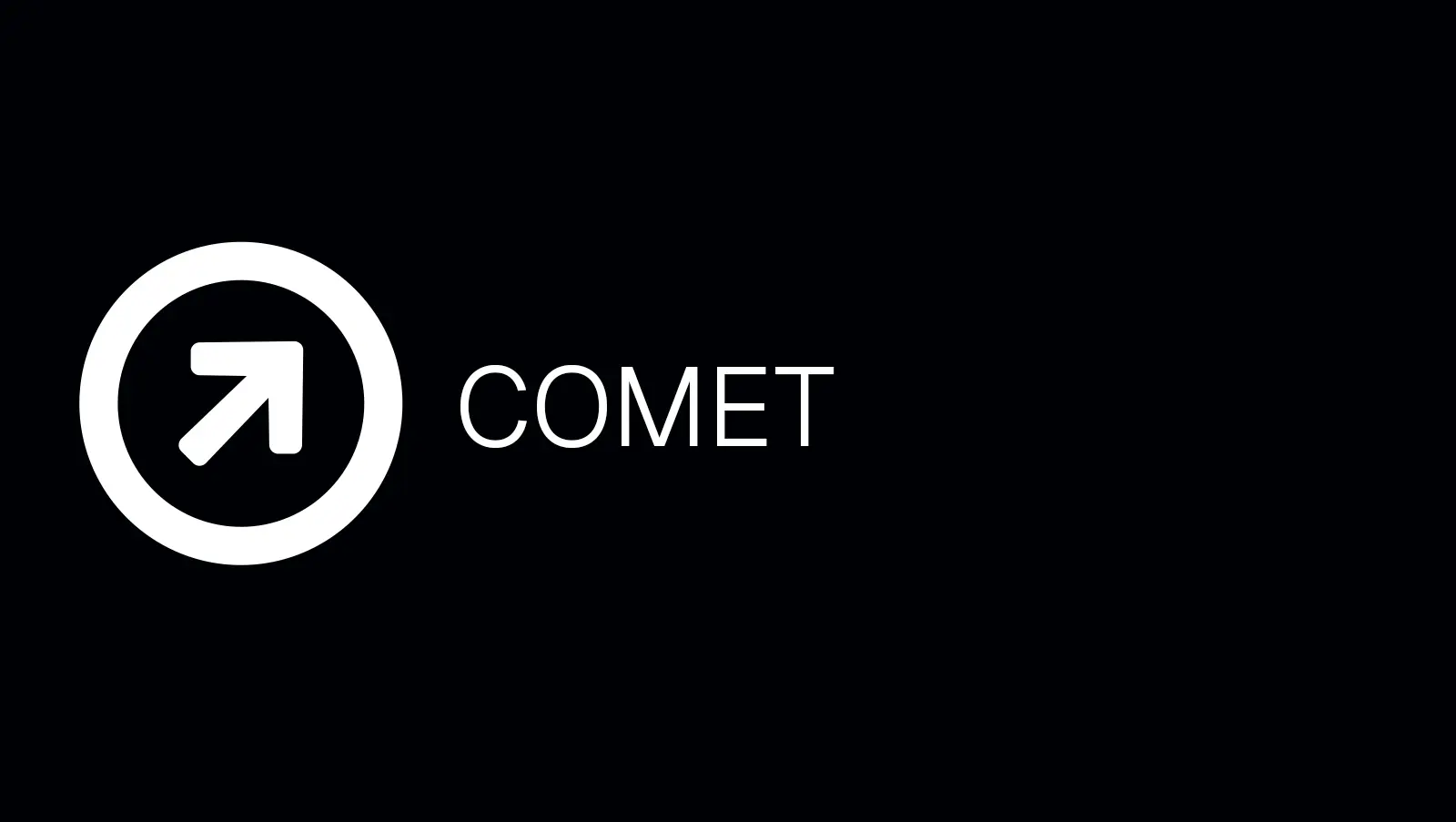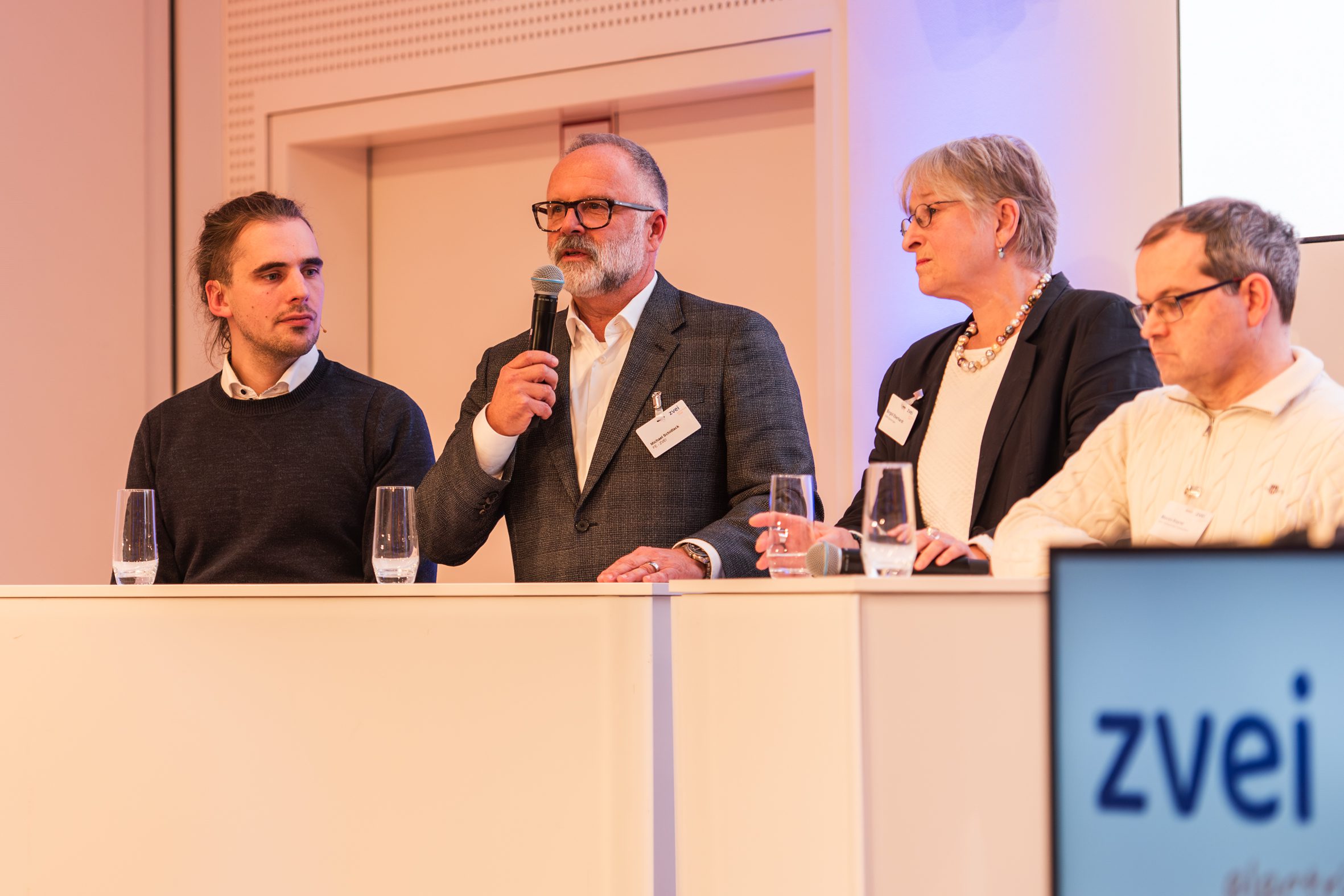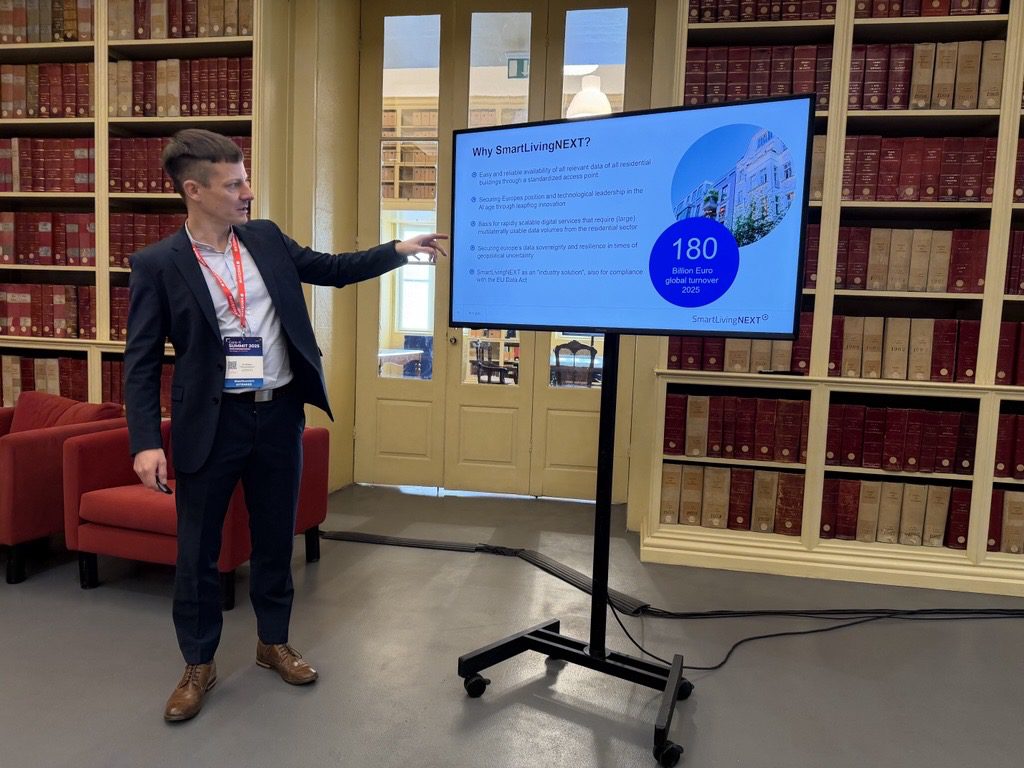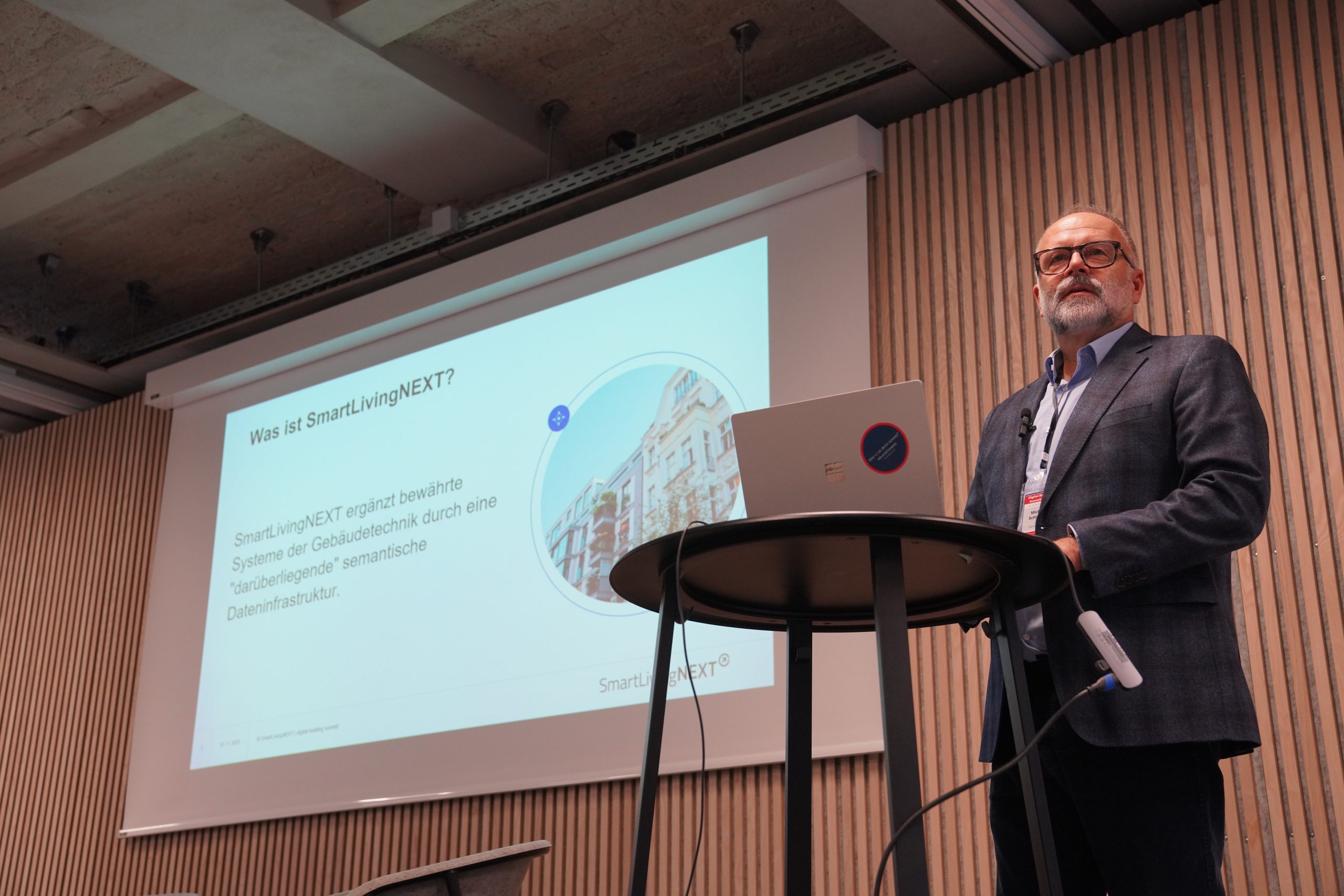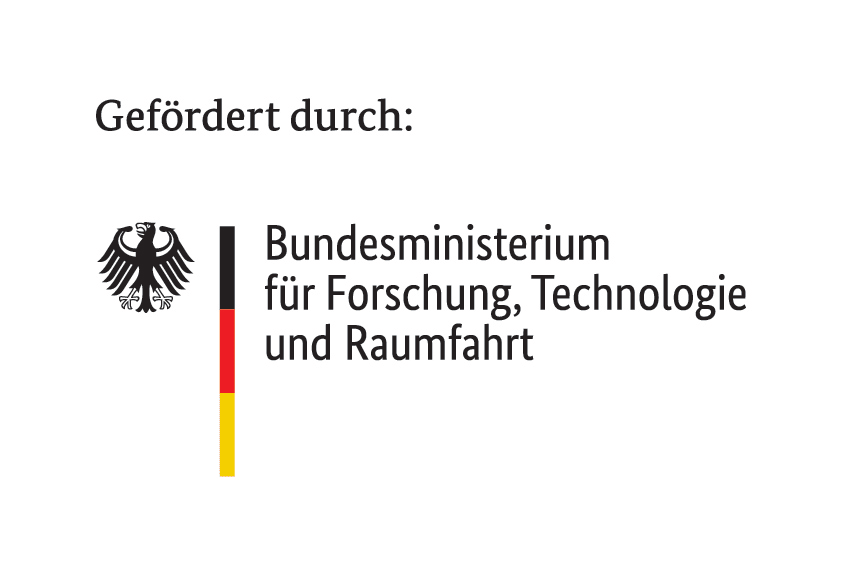“We need a political push to support the introduction and dissemination of open and secure data spaces.”
27. August 2025
8 minutes
The Fraunhofer IOSB-AST is part of the Fraunhofer-Gesellschaft, which is the leading international organization for applied research. As a driver of innovation, the institute leads strategic initiatives to solve future challenges in the field of Applied Systems Technology (AST) with a focus on energy, water and industrial applications. In the field of energy management, the institute works on system analyses, data ecosystems, digital twins and AI-supported optimization processes for a sustainable energy supply, among other things. In this interview, Oliver Warweg, responsible for strategic business development, talks about the role of the institute as an associated partner of SmartLivingNEXT, data-based system analyses, interoperability and why the user perspective will play a central role in the future.
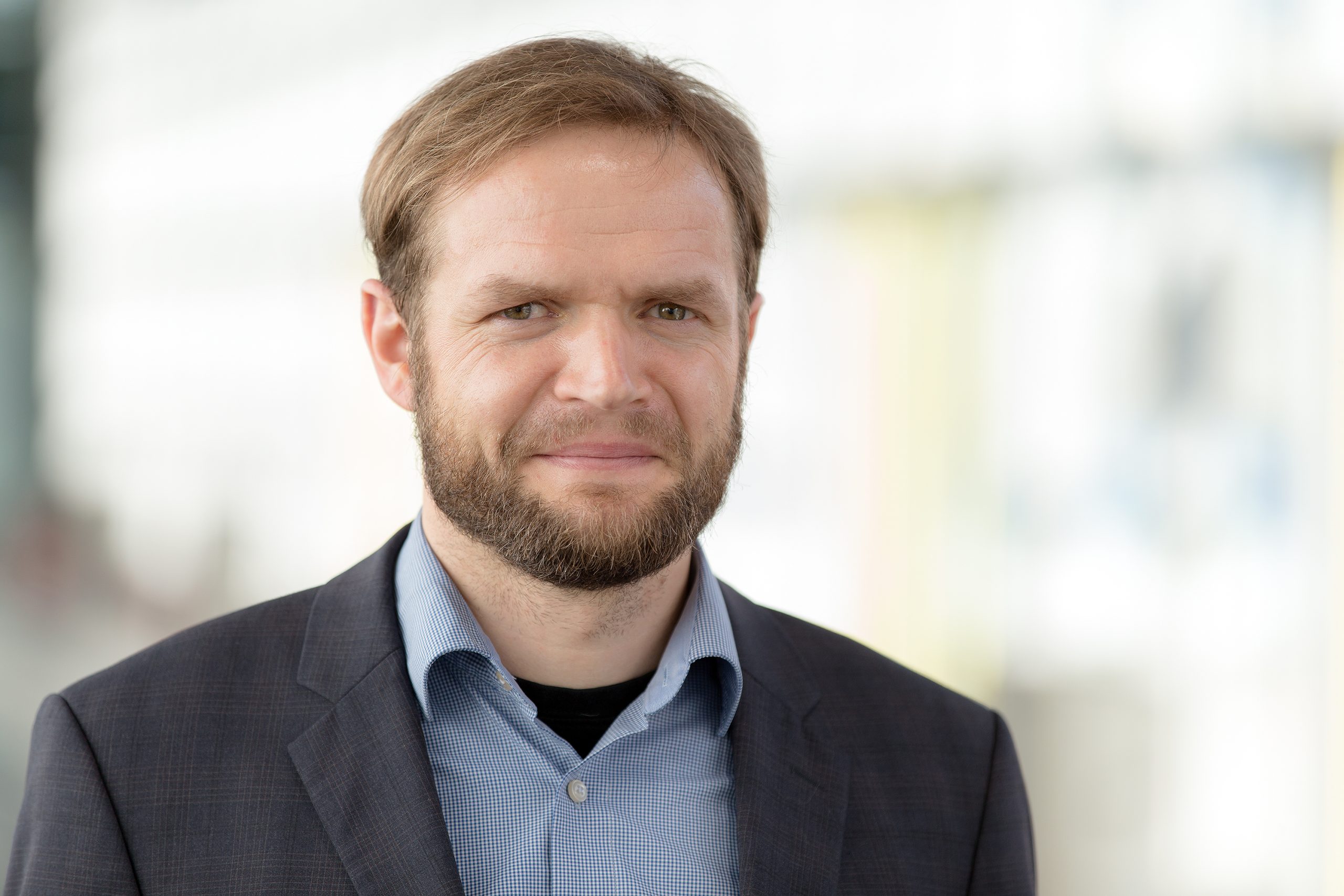
Mr. Warweg, what are the current research priorities at Fraunhofer IOSB-AST in the field of energy management, system analyses and data ecosystems?
At Fraunhofer IOSB-AST, our current research focus in the aforementioned areas is particularly on the development and application of innovative digital technologies. A central topic is the design and implementation of data spaces that enable secure and sovereign data exchange between various players in the energy industry, but also in connection with the mobility, smart living and industrial sectors. In the field of artificial intelligence (AI), we are researching the development of advanced forecasting and optimization methods for energy management in order to efficiently exploit flexibility potential and support the integration of renewable energies. Generative AI currently plays a very important role in this. Our aim is to use these approaches to drive forward digitalization and sector coupling in the energy industry and thus make an important contribution to the energy transition.
What motivated you to become an associated partner of SmartLivingNEXT?
Our motivation lies above all in the opportunity to develop and test innovative solutions for sector coupling together with other players. A key aspect of this is the interoperability between the emerging data ecosystems, which enables seamless collaboration between different sectors. It is also particularly important to us to strengthen trust and acceptance in data sharing. After all, data-based business models can only emerge and thus create added value for the players involved and end customers if everyone involved is willing to exchange relevant data securely.
Where do you see overlaps between your work and the objectives of the SmartLivingNEXT research project?
We see numerous overlaps in terms of content between our work at Fraunhofer IOSB-AST and the objectives of SmartLivingNEXT. One central aspect is concepts that enable end customers to provide energy flexibility as prosumers and thus actively participate in the energy system. Another common goal is the convergence of technical foundations in order to remove existing technical hurdles and create interoperable, open data ecosystems. These are important steps to enable innovative business models and drive forward sector coupling.
In your opinion, how important is the interoperability of technical systems and what role do open standards and data spaces play in this?
For us, the interoperability of technical systems is a key success factor in enabling cross-sector innovation. This is not just about technical compatibility, but also about semantic interoperability, i.e. a common understanding of the exchanged data. Equally important are aspects such as compliance in order to adhere to legal and regulatory requirements when exchanging data, as well as the interoperability of different operator models of data ecosystems. Open standards and data spaces play a central role here: they create the basis for secure, trustworthy and flexible collaboration between different players and promote the sustainable development of a digital ecosystem.
What potential do you see in linking building technology, energy systems and user behavior?
We see great potential in interconnection, particularly for security of supply and reducing grid expansion costs. By balancing generation and consumption locally, load peaks can be reduced and the grid relieved. At the same time, the active involvement of end customers opens up new opportunities to use energy flexibility and thus react better to volatile generation from renewable energies. This also creates local added value, as end customers and local energy suppliers can benefit from their involvement in the energy system.
To what extent do your models also take user-centric perspectives into account – i.e. actual behavior, comfort requirements or acceptance?
Our models incorporate user-centered perspectives in several aspects. The actual behavior of users is already taken into account in our prediction models to enable realistic forecasts. Comfort requirements can generally be mapped in the optimization models, but such information has rarely been available in sufficient quality to date. To make optimal use of these functions, it is important to increase end customers’ acceptance of sharing their data. Here we rely on the use of data rooms that enable secure and controlled data exchange. We expect that this will increase the willingness to share data and that we will be able to further improve our models, particularly with regard to individual convenience requirements.
How do you rate the use of AI to optimize energy systems at building or district level?
We consider the use of artificial intelligence to be very promising. AI has already been used successfully for several years in the operation of energy systems and in energy management. However, traditional approaches often require extensive expert knowledge, lengthy analyses and large amounts of data, which are not yet available on such a large scale at building and neighborhood level. Generative AI in particular opens up new possibilities here: It can efficiently integrate expert knowledge, achieve astonishing results even with limited data and can therefore lead to very good analysis results more quickly.
Where do you still see a need for research in order to make smart and sustainable solutions widely available in the future?
One important aspect is the simplification of the introduction and implementation of data spaces, as their implementation is currently still very complex and costly. In addition, interoperability must be ensured not only technically, but above all at a semantic level, so that different systems and actors can develop a common understanding of the data. Finally, we also see a need for further development in usage control in order to be able to manage data exchange securely, transparently and in accordance with the end user’s specifications.
Finally, what would you like to see from politics, research and industry in order to accelerate the transfer to the market?
In order to accelerate the transfer to the market, we would like to see politicians swiftly implement the EU directives on the establishment of energy sharing solutions at district level. These create the legal basis for local energy communities to emerge and operate economically. We expect more courage from industry to invest specifically in local energy supply concepts in order to bring the energy transition directly to the population. Our research results clearly show that these investments are economically worthwhile and sustainably strengthen local value creation. We see data ecosystems as the necessary IT and communication backbone for these developments. However, for this backbone to be fully effective, some political impetus is still needed to support the introduction and dissemination of open, secure data spaces.
Listen to the article (in German):
Editorial office:
Ilka
Klein
Category:
Flagship project
